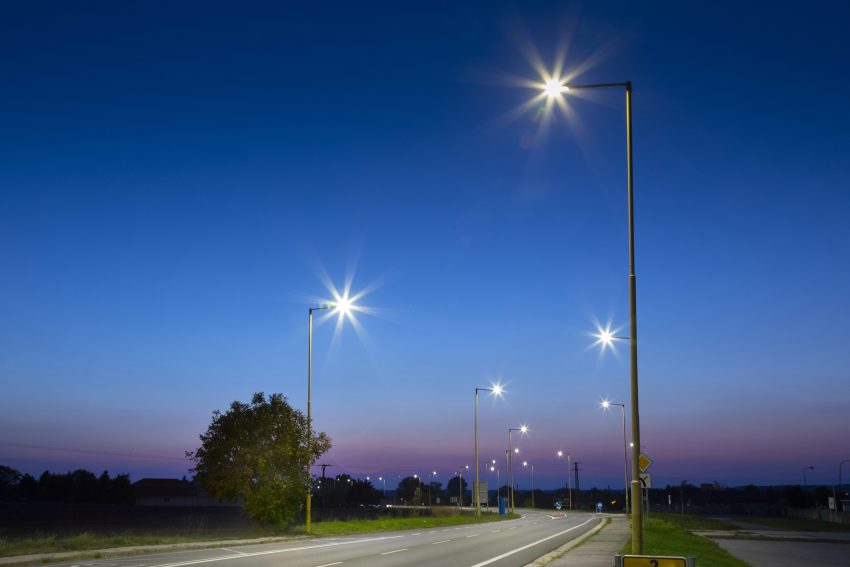Urban landscapes serve as the canvases upon which the narrative of a city unfolds. They are not just spaces of functionality but also symbols of identity and culture. Within these landscapes, street lighting plays a crucial role, not only in ensuring safety and security but also in shaping the aesthetic ambiance of the environment. However, the indiscriminate use of street lighting can sometimes detract from the visual appeal of urban areas, leading to light pollution and a loss of the natural beauty of the night sky. In this article, we explore the importance of aesthetic considerations in street light control and discuss various strategies for enhancing urban landscapes while maintaining functionality and safety.
The Impact of Street Lighting on Urban Aesthetics
Street lighting has a significant impact on the overall aesthetic quality of urban environments. Well-designed lighting can enhance architectural features, create focal points, and evoke specific moods. On the other hand, poorly executed lighting schemes can result in visual clutter, glare, and an overall sense of discomfort. Moreover, excessive or poorly directed lighting can contribute to light pollution, which not only obscures views of the night sky but also disrupts ecosystems and affects human health.
One of the key challenges in street light control is striking a balance between safety and aesthetics. While ensuring adequate illumination for pedestrian and vehicular traffic is essential, it is equally important to consider the visual impact of lighting fixtures during both day and night. Aesthetic considerations should encompass factors such as fixture design, light intensity, color temperature, and the directionality of light.
Designing Aesthetic Lighting Solutions
Designing aesthetic lighting solutions requires a holistic approach that takes into account the unique characteristics of each urban area. Here are some key considerations for enhancing urban landscapes through street light control:
Fixture Design: The design of lighting fixtures plays a crucial role in shaping the visual identity of a streetscape. Modern fixtures come in a variety of styles and materials, allowing designers to choose options that complement the surrounding architecture and landscape. Sleek, minimalist fixtures can add a contemporary touch to urban environments, while traditional lantern-style fixtures can evoke a sense of nostalgia and heritage.
Lighting Levels: Determining the appropriate lighting levels for different areas within a city is essential for creating visually appealing spaces. While high-intensity lighting may be necessary in busy thoroughfares and intersections, lower levels of illumination can be used in residential areas and parks to create a more intimate and inviting atmosphere. The use of dimmable LED fixtures can provide flexibility in adjusting lighting levels based on time of day and usage patterns.
Color Temperature: The color temperature of light can have a significant impact on the perceived ambiance of an urban space. Warm white light (2700-3000K) creates a cozy and inviting atmosphere, while cooler white light (4000-5000K) is often used in commercial and industrial areas for its bright and energizing qualities. By carefully selecting the color temperature of street lighting, designers can enhance the character of different urban environments.
Directionality: Controlling the directionality of light is crucial for minimizing glare and light spillage. Directing light downward onto sidewalks and roadways helps improve visibility for pedestrians and motorists while reducing light pollution and skyglow. Shielding fixtures and using specialized optics can further minimize glare and create more uniform lighting distributions.
Case Studies in Aesthetic Street Light Control
Several cities around the world have implemented innovative street lighting projects that prioritize aesthetics while maintaining functionality and efficiency. One notable example is the “Lighting Urban Community International” (LUCI) network, which brings together cities, lighting professionals, and researchers to exchange knowledge and best practices in urban lighting design.
In Barcelona, Spain, the “Superblocks” initiative aims to reclaim streets from vehicular traffic and transform them into pedestrian-friendly zones. As part of this initiative, the city has implemented a dynamic lighting system that adjusts lighting levels based on pedestrian activity and time of day. The use of warm white LED fixtures and carefully curated lighting scenes has helped create vibrant and inviting public spaces within the city.
In Copenhagen, Denmark, the “Cycle Superhighways” project has focused on improving lighting conditions along bicycle routes to enhance safety and encourage cycling as a mode of transportation. The city has installed custom-designed lighting fixtures that provide optimal visibility for cyclists while minimizing glare and light spillage. The use of motion sensors and intelligent controls allows the lighting system to adapt to changing environmental conditions and user behavior.
Conclusion
Enhancing urban landscapes through aesthetic street light control requires a careful balance between functionality, sustainability, and visual appeal. By incorporating principles of good design, selecting appropriate lighting technologies, and engaging with stakeholders and the community, cities can create vibrant and livable environments that are both safe and visually pleasing. As we continue to explore new technologies and design strategies, it is essential to prioritize the aesthetic quality of our urban environments and create spaces that enrich the lives of residents and visitors alike.

